You’ve planned a trip to Kerala and the question on the tip of your tongue is what to wear in Kerala.
Considering that India’s southernmost state has everything from breezy hill stations to humid backwaters and beaches, deciding what to pack for Kerala is one of the most important things you’ll do.
You might be wondering: what is the climate in Kerala? Is the dress code in Kerala strict? Can you wear shorts in Kerala?
The first thing I say when anyone asks me what to wear in Kerala, is to pack light, breathable clothing. Kerala is hot and humid all year-round. You will also want to dress respectfully, according to the culture.
In this blog post, I will cover exactly what to wear and pack so that you’ll feel comfortable throughout your trip.
Planning your itinerary? Feel free to check out my detailed Kerala itinerary to start properly planning your trip.
I have also written a detailed Munnar itinerary, Alleppey itinerary and Thekkady itinerary.
Disclosure: This post includes affiliate links. If you decide to click through and make a qualifying purchase, I will receive a small commission at no extra cost to you – thanks for your support.
QUICK INFORMATION
Best time to visit: September to March
Key places to visit: Munnar, Thekaddy, Allepey
What clothes do they wear in Kerala?

Many locals dress in traditional Kerala attire.
Traditionally, Hindu women wear the Kerala saree, which is also known by the name mundum neriyathum. It is a woven, two-piece dress.
One half of the dress consists of a full-length piece of fabric covering the lower half, which is fastened at the waist.
The other half consists of a long strip of fabric draped over the left shoulder. It is usually tucked into the blouse and/or fastened at the waist.
The traditional colour of the Kerala saree is white and gold with a gold-toned border named Kara.
Hindu men traditionally wear Kerala dhotis (also called mundu).
The mundu is an ankle-length piece of fabric which is wrapped around the waist. Like the saree, it has a gold-toned Kara border.
In rural parts of Kerala, many men wear a specific type of mundu called the kasavu mundu, which is woven from a thicker fabric.
While you’ll see many people dressed in traditional Kerala attire on the street, there are also plenty of locals who dress casually.
Women usually wear dresses or a blouse with skirts which fall below the knee.
Men typically wear a shirt with jeans or trousers.
What is the climate in Kerala?
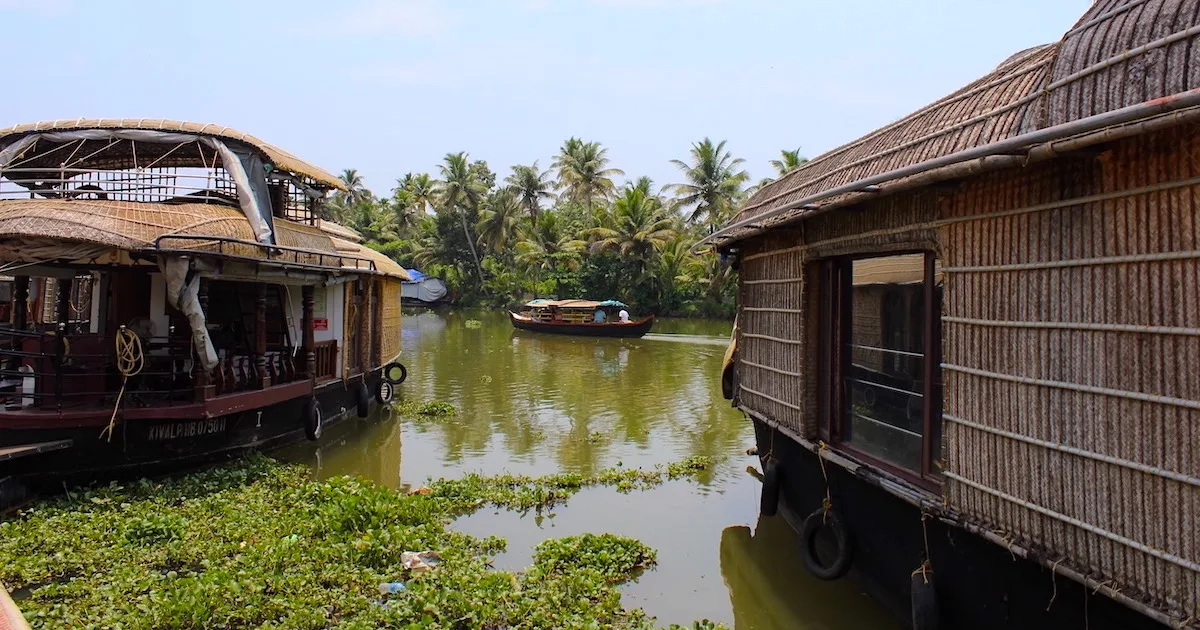
Don’t underestimate how hot and humid it is in Kerala.
As India’s southernmost state, it is closer to the equator than the north of India.
Summer: March to May
Average temperature: 28 – 35 °C (82 – 95 °F)
During the summer season in Kerala, the weather is hot and humid during the day and night.
The height of summer in Kerala is March and May.
You should dress in lightweight, breathable clothing to keep yourself cool.
Because it’s so humid, you will feel very hot and sticky even after spending only a few minutes outdoors.
Opt to wear cotton and linen fabric or garments labelled as sweat-wicking. You may need to get changed multiple times a day, so packing plenty of clothes is key.
In the summer, mountainous areas such as Munnar, Wayanad or Thekkady are slightly cooler. The temperature can drop to 20°C (68°F) in the mountains.
Monsoon Season: June to September
Average temperature: 20 – 30 °C (68 – 86 °F)
Monsoon season features heavy rain mixed with hot, humid weather.
In monsoon season, it’s especially important that you wear sturdy, comfortable footwear with good grips in case the ground is slippery.
You will still need light, breathable cotton clothing, but you should always carry a lightweight waterproof raincoat and plastic or waterproof bags to protect valuables during downpours.
Mosquito repellent and sunglasses are still needed.
Winter season: September to March
Average temperature: 18 – 28 °C (64 – 82 °F)
Winter season is the best time to visit Kerala. It’s still warm, but it isn’t as hot and humid as summer or monsoon season.
This is also a good time for hiking and other outdoor activities.
If you’re travelling into mountainous areas, the temperature can drop to 18°C.
What is the best season to visit Kerala?
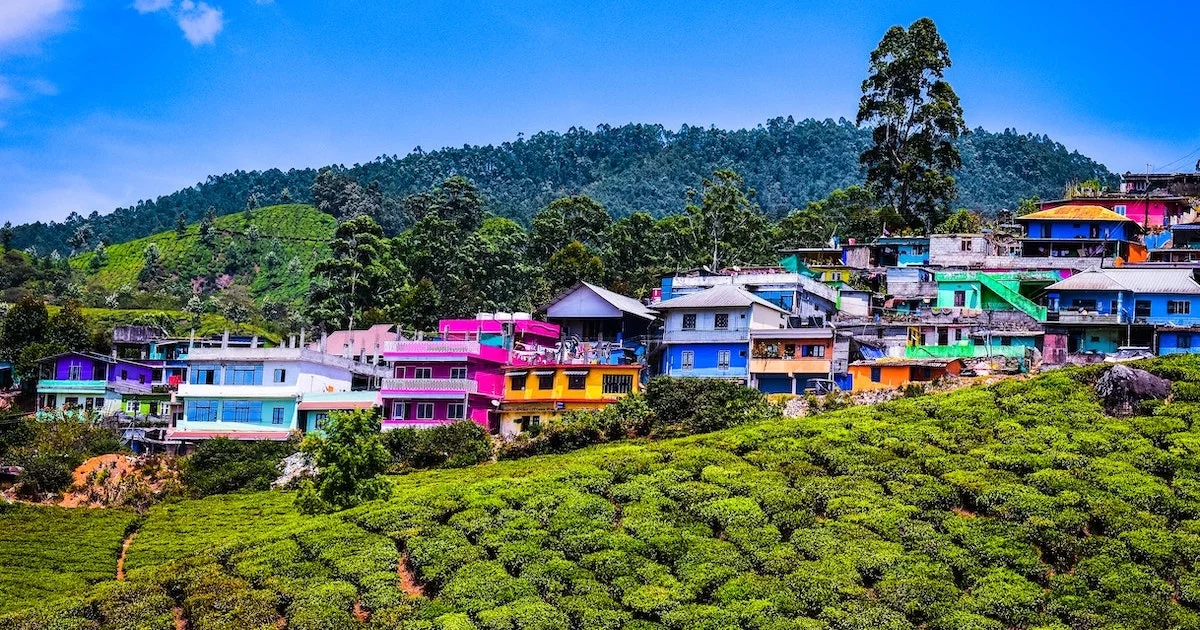
The best season to visit Kerala is winter.
Most tourists visit Kerala between October and March. This is considered to be the peak tourist season in Kerala, and there are plenty of activities running.
That being said, if you’re looking to avoid the crowds, you might want to visit Kerala in the summer as long as you’re ready to brave the heat.
Monsoon season is the cheapest time to visit, but the rainiest.
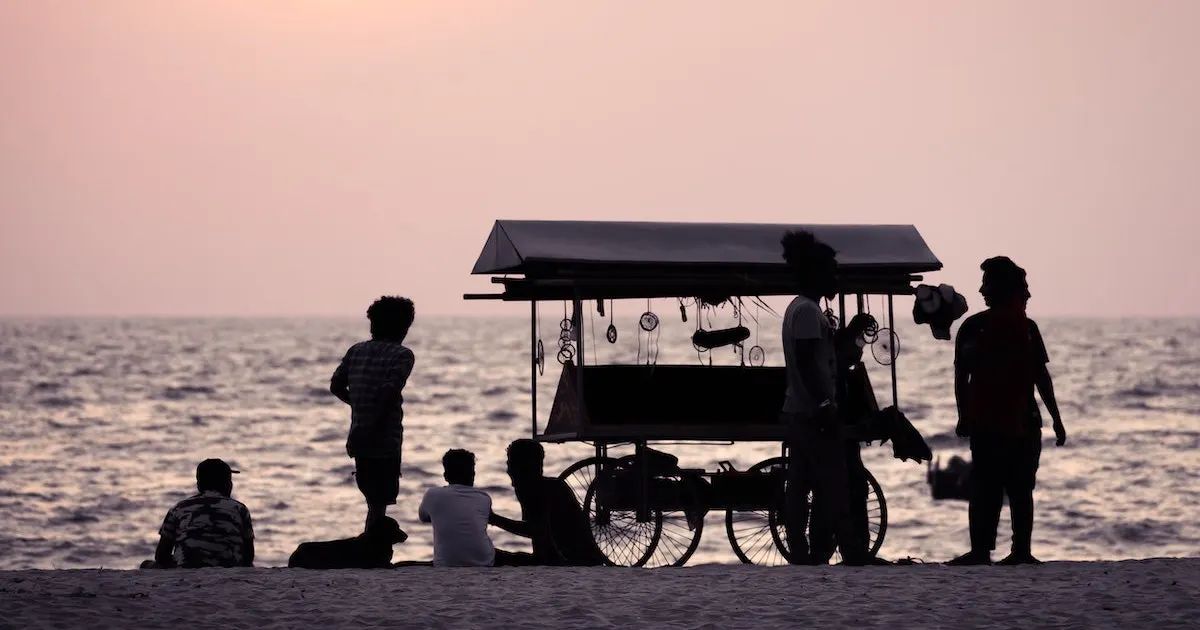
What to Wear in Kerala
Can you wear shorts in Kerala?

The question isn’t really whether you can wear shorts in Kerala. It’s whether you should wear shorts in Kerala.
Since Kerala is a conservative state, choosing not to wear short shorts in Kerala shows that you respect the local culture and traditions.
In the place of short shorts, try to wear shorts that are baggy and end below the knee. Women might also want to wear a loose skirt or dress that rests below the knee.
Covering your shoulders is ideal too.
What to Wear in Kerala: Footwear
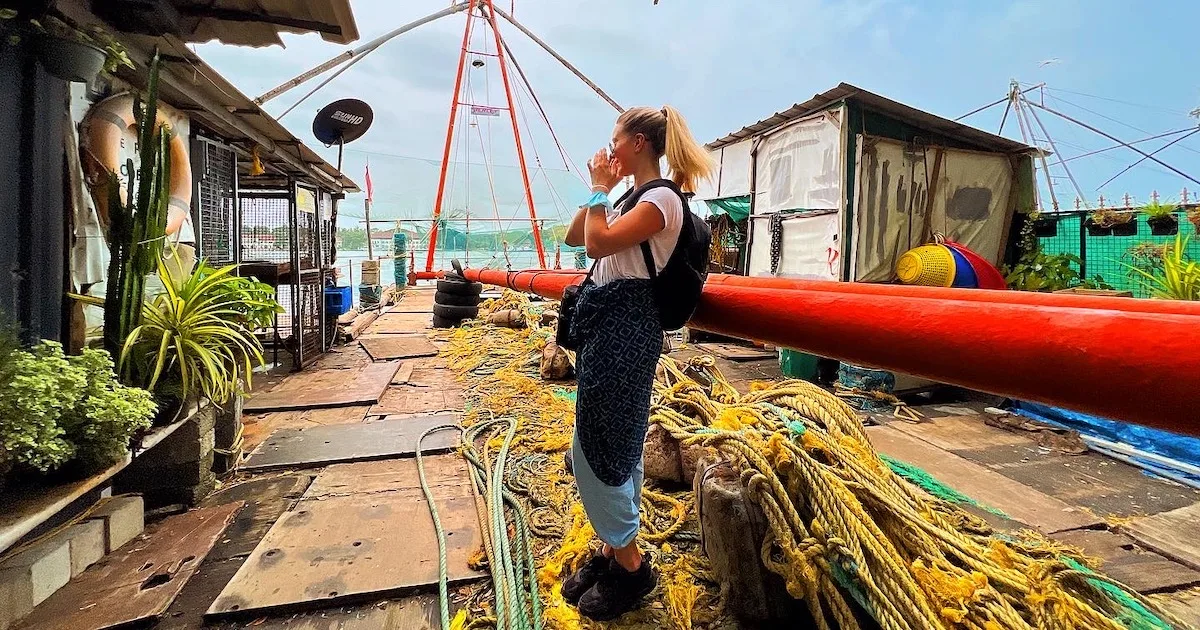
Footwear is very important in Kerala. Rule number one is that your footwear should be comfortable.
As a tourist, it’s likely that you’ll be doing a lot of walking, whether that’s travelling between hotels, sightseeing, or trekking.
A closed-toe shoe is essential, even in the city, due to the uneven terrain.
You may also want to bring comfortable sandals if you’re visiting beaches.
Consider packing slip-on shoes such as flip flops to wear around your accommodation too. Kerala accommodation, even the luxury five-star hotels, aren’t always able to keep out bugs and other creepy crawlies, especially in the mountains or jungle.
What to Wear in Kerala for Women
Compared to some other Indian states, the dress code for women is fairly relaxed.
However, you should try to dress as modestly as possible by covering your shoulders, cleavage and knees, and avoiding tight or clingy clothing. Remember, you’re a visitor.
The ideal outfit for women visiting Kerala is a dress or a skirt covering the knees, shoulders and cleavage.
You could also wear trousers or shorts below knee-length. Showing your midriff is generally acceptable.
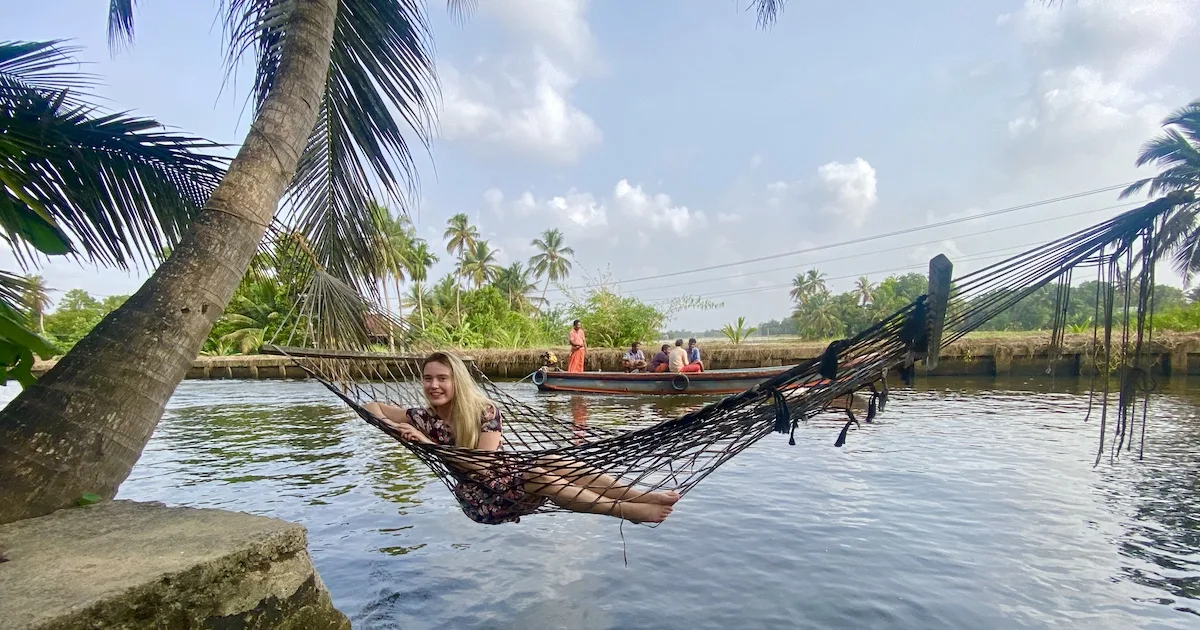
It’s not the end of the world if you show either your knees or shoulders, but try to keep it as modest as possible.
If you’re visiting any temples, you must cover up your shoulders and knees or you won’t be permitted to enter.
What to Wear in Kerala for Men
The best thing for men to wear in Kerala is a t-shirt or a shirt combined with trousers or knee-length shorts. This will blend in with the locals’ attire.
Try to wear cotton or linen trousers if possible, as they will keep you cooler and dry quicker than materials such as denim.
What to Wear on a Honeymoon in Kerala
As long as you’re dressing modestly, it’s really completely up to you how you dress for your honeymoon in Kerala.
You might want to wear an ankle-length dress or a midi skirt, blouse and shawl.
Just remember that if you’re heading to any hill stations like Munnar or Thekkady, you’ll need extra cardigans and cover-ups in the evenings when the temperature drops.
What to Wear in Kerala: Complete Kerala Packing List
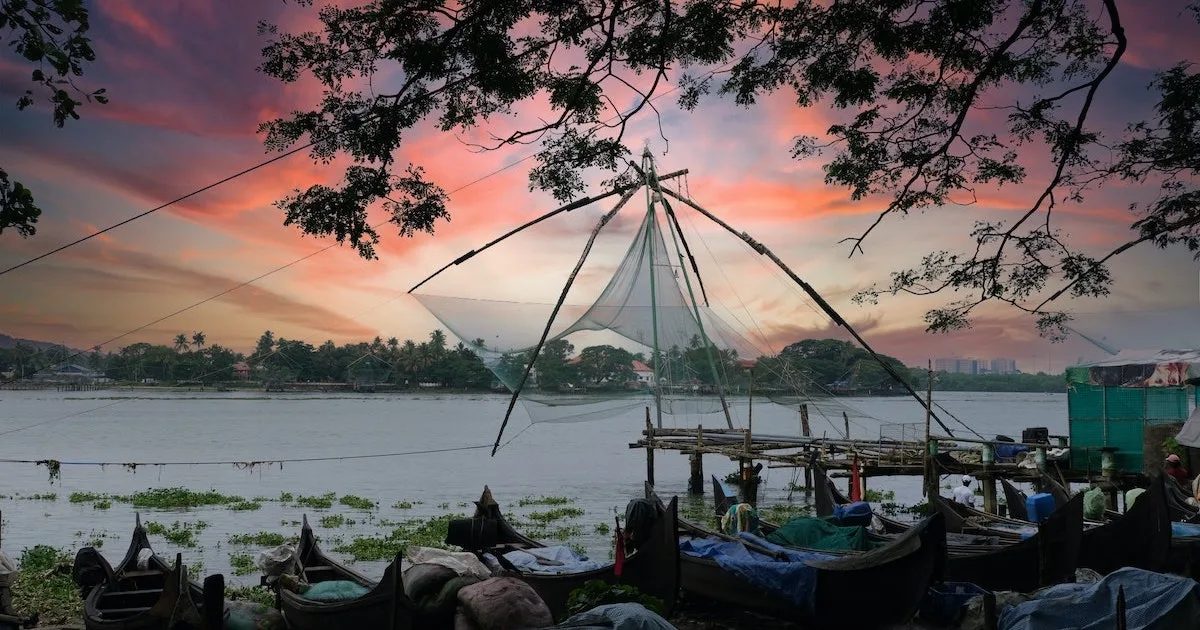
Now that you know exactly what to wear in Kerala, the next step is to pack your things.
The following Kerala packing list covers everything you’ll need, from the obvious clothes and footwear to travel documents, first-aid, and other handy gear.
Clothes
- Lightweight and breathable t-shirts or shirts, including plenty of spares as a change of clothes.
- Lightweight cardigan or jacket.
- Shorts or skirts, past knee length.
- Dresses, past knee length and covering your shoulders.
- Long, breathable trousers.
- Swimwear
- Socks, including spare socks
- Underwear and bras
- Accessories (if needed)
Note that it’s unusual to see anyone wearing a bikini or swimsuit at public beaches in India
Locals generally gather at the beach to wade in the shallows fully-clothed and watch the sunset.
You might feel more comfortable wearing a rash guard to cover up.
Shoes
Comfort and practicality is key here.
- Sandals or flip flops
- Sturdy trainers
- Hiking shoes or boots (if needed)
- Sea shoes
Travel documents
- Passport
- Visa (if required)
- Travel insurance documents. I used Staysure travel insurance for my trip.
Valuables
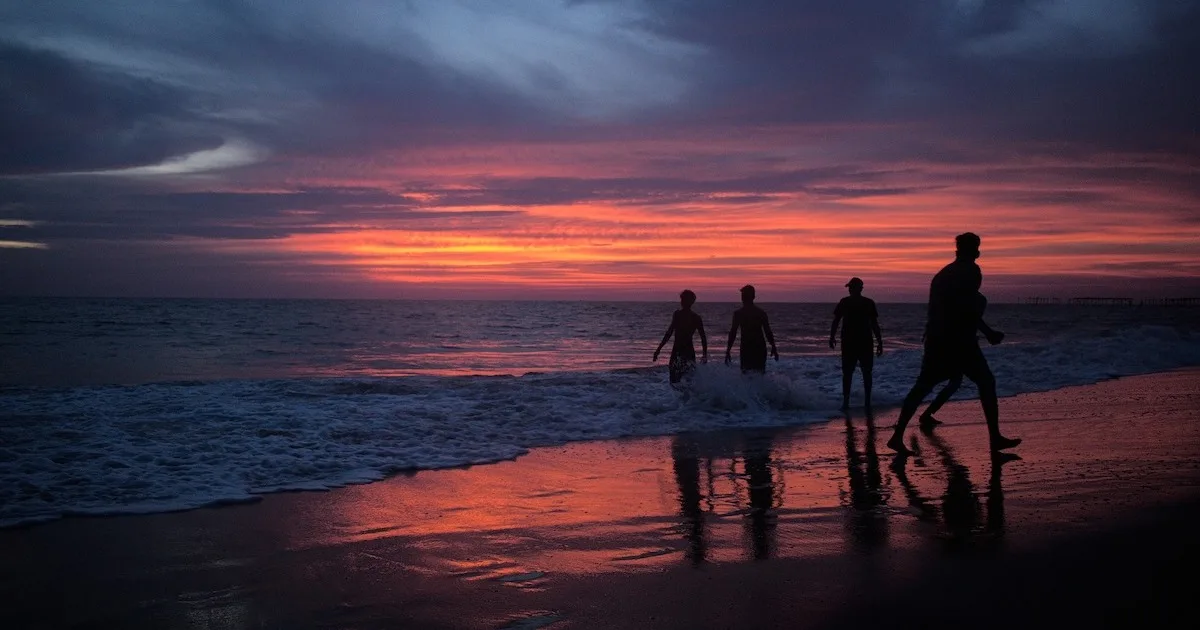
Before you decide to pack your valuables, you should make sure that your accommodation has suitable storage facilities for them.
If they don’t, or if you’re going to be moving around a lot, you may need to carry valuables in your day backpack.
Many hotels provide safes, although it isn’t always guaranteed that your laptop will fit into the safe. Hostels often provide lockers, which usually require you to bring your own padlock.
In general, pickpocketing and theft isn’t rife in Kerala, so you should feel safe carrying your valuables with you, as long as you take the same precautions you would take anywhere else in the world.
Personal items
When it comes to money, the currency in Kerala is the Indian rupee (INR). However, international tourists are not permitted to bring any amount of INR into the country.
There are plenty of ATMs in Kerala where you can withdraw money, although the ATMs in the city regularly run out of money.
I would suggest bringing cash in your original currency, as well as a debit or credit card.
You can exchange your currency into Indian rupees either at the airport or at a bank. There are also ATMs at the airports.
- Cash and a debit card
- ID card
- Prescription medication, accompanied by a copy of the prescription (if needed).
Electronics
- Mobile phone and case.
- Phone charger(s)
- Earphones
- Plug adaptor(s). Electric outlets in Kerala require a Type C plug. This has two round rings, parallel to each other. However, some outlets may only take a Type D or a Type M plug, which have three rungs.
- Camera
- Power bank
Toiletries
Many of the toiletries sold in Kerala will be different than those you’re used to back home.
For example, many of the toothpastes have herbal Ayurvedic ingredients, so they taste very different.
- Toothbrush and toothpaste
- Face wash
- Shampoo and conditioner
- Shower gel and applicator
- Moisturiser
- Hair brush or comb
- Deodorant
- Body spray or perfume
- Razors and shaving cream
- Tweezers
- Suncream
Bags
You’re going to need two main bags for Kerala: one big suitcase or backpack and a day bag.
It’s far easier to single-handedly carry a backpack between hotels or hostels, buses, taxis, trains and aeroplanes than a suitcase.
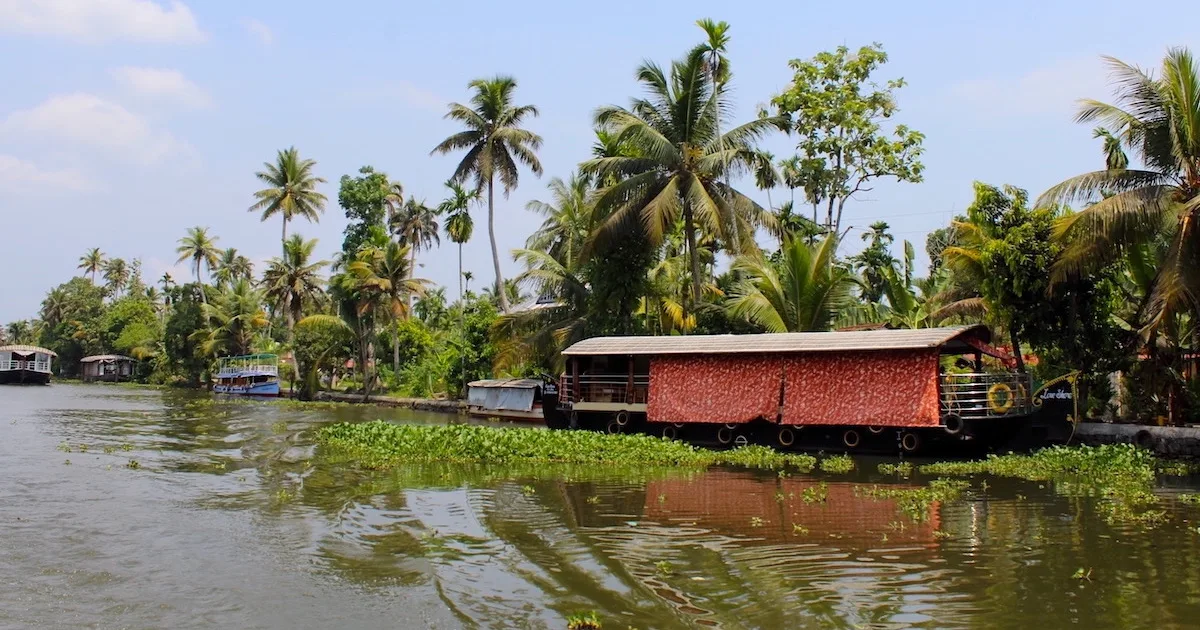
- One suitcase or a large backpack
- One day-sized backpack
- A laundry bag
- Optional: A money belt to store valuables
Miscellaneous
- Reusable water bottle
- Mosquito repellant (with DEET)
- Padlocks for hostel lockers
- Tissues (for toilets without paper)
- A small bottle of liquid laundry detergent
- Eye mask
- Earplugs
What not to pack for Kerala
- Heavy raincoats: As long as you bring a light raincoat equipped with a proper Durable Water Repellent (DWR) coating, you don’t need the extra padding
- High heels: Unless you’re heading to Kerala for a formal work affair, it’s probably best to leave the high heels at home.
How can I plan for 5 days in Kerala?
1. Decide what time of year you want to visit Kerala
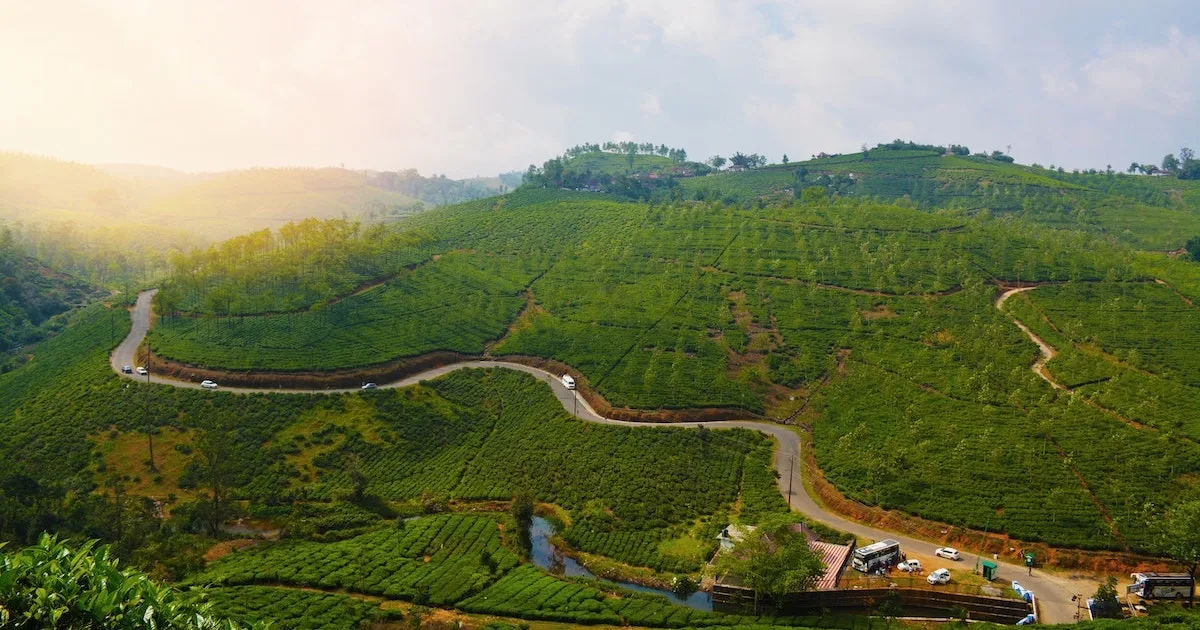
The first step is to decide the best season for your visit to Kerala. You might want to visit Kerala in the peak winter season between October and March, when the weather is more bearable and activities are running full-steam.
Or, you may prefer to beat the crowds and tackle the summer heat between March and June, like I did. If you’re visiting backwaters or waterfalls and not engaging in too many outdoor activities, monsoon season is a good offbeat option.
2. Deduce whether you want to visit north, central or south Kerala
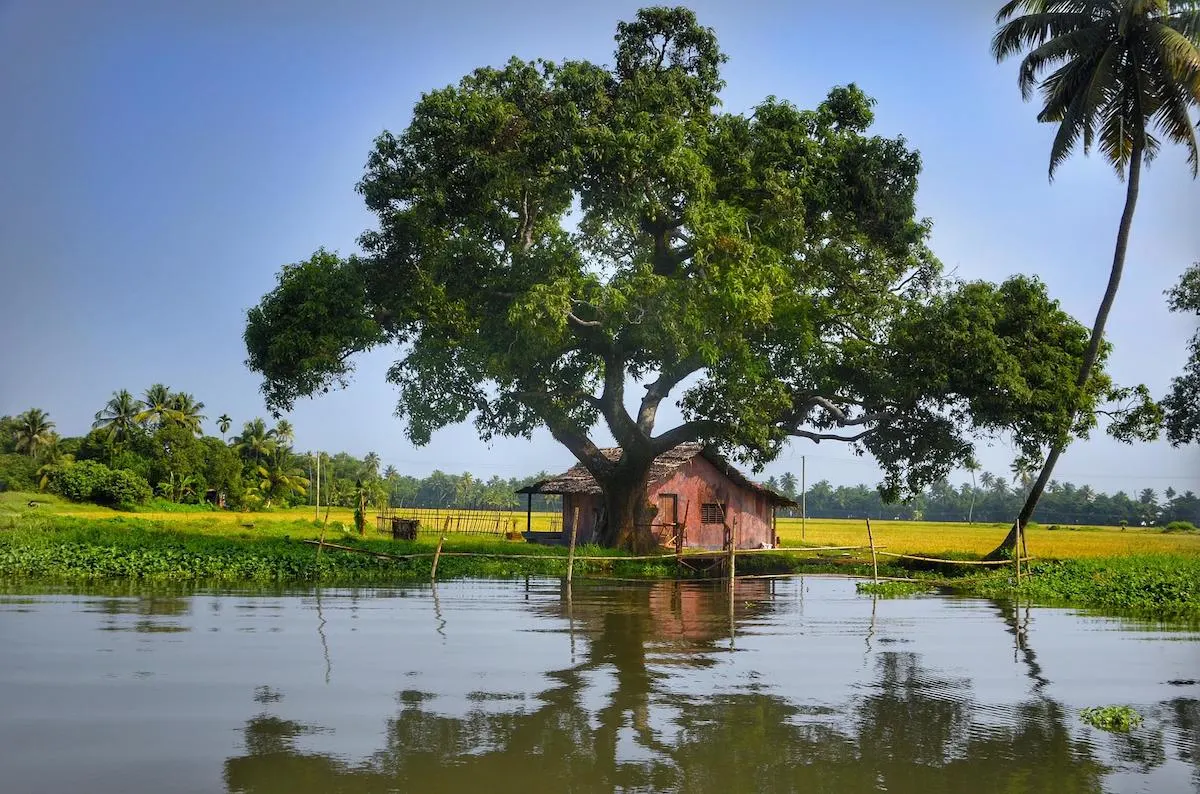
North Kerala destinations such as Kozhikode, Wayanad, Kannur and Kasaragod are less-frequented by tourists compared to south and central Kerala. With distinct Malabar cuisine, they are also considered to have some of the best food in Kerala district.
Head to north Kerala for mountain scenery, seaside villages, Malabar cuisine, and fewer crowds.
Central Kerala includes the city Cochin, along with the regions of Palakkad, Thrissur, Idukki, Ernakulam and Kottayam. Cochin is famous for its Chinese fishing nets and cultural venues.
Visit central Kerala for beaches such as Cherai Beach, offbeat backwaters, the big city and farmlands.
South Kerala is the most popular region of Kerala for tourists, and it is split into three distinct attractions: beaches, backwaters and mountains.
The tea plantations and spice plantations across Munnar and Thekkady are incredibly scenic, and a hotspot for outdoor and experiential adventures.
Alleppey is one of several backwater destinations famed for watersports and houseboat cruises.
Further south, Kollam and Trivandrum are well-known for their wild coastlines and golden-sand beaches.
3. Find the cheapest flights
Two of my favourite tools for finding the cheapest flights are Skyscanner and Google Flights. However, it generally winds up cheaper to book directly with the airline.
AirAsia runs frequent, affordable flights to Kerala. IndiGo also provides affordable flights within India.
There are four airports in Kerala: Trivandrum, Cochin, Calicut and Kannur.
Travel by land can take longer than you expect due to the condition of the roads, so you should try to fly into the airport nearest to your desired destination.
Note: Dehli Airport Transfer Times
International flights arriving in Kerala always travel through Delhi airport. There are no immigration facilities at Kerala’s airports. Therefore, always leave at least two to three hours between your arrival time into Delhi airport and the time of your flight’s departure to Kerala.
You will need to pick up any checked baggage, go through immigration, and then pass through security with the rest of Delhi airport, before checking in your bag again and getting your ticket.
Delhi airport is prone to heavy queues, so this can be a long process.
4. Book your accommodation
Kerala has an excellent selection of accommodation, no matter your budget.
For the high-end traveller, Kerala has a combination of luxury resorts and boutique hotels.
Those who are visiting on a tighter budget can book mid-budget hotels or resorts.
There are also hostels for those who would like to save money and meet like-minded travellers at the same time.
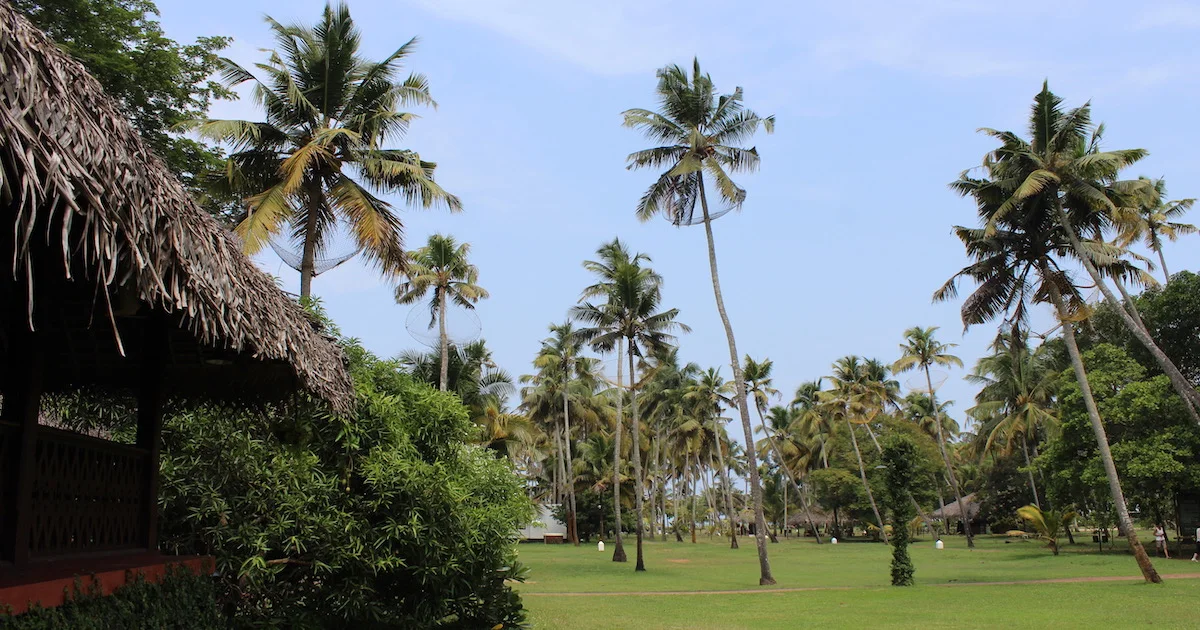
Marari Beach Resort in Marari fishing village
Other unique forms of accommodation include tented camping and glamping and treehouses.
I found that Booking.com has the biggest selection of accommodation in Kerala.
During my time in Kerala, I stayed at several resorts. I have compiled a list of my favourite hotels/resorts from my trip:
- Marari Beach Resort: A sustainable hotel in Marari fishing village with a private beach and saltwater pool. The resort provides support and jobs for the villagers.
- Kumarakom Lake Resort: A sought-after backwater resort with heritage villas popular with honeymooners. It runs a nightly houseboat cruise across Vembanad Lake.
- Forte Kochi: A boutique hotel with a pool in the old town of Cochin, a couple of minutes’ walk from the Chinese fishing nets.
- Amber Dale Luxury Hotel & Spa: Luxury rooms overlooking the Munnar tea plantations. This is by far the best breakfast view I’ve had in my life, with clouds and tea plantations spread out below.
5. Plan your transport
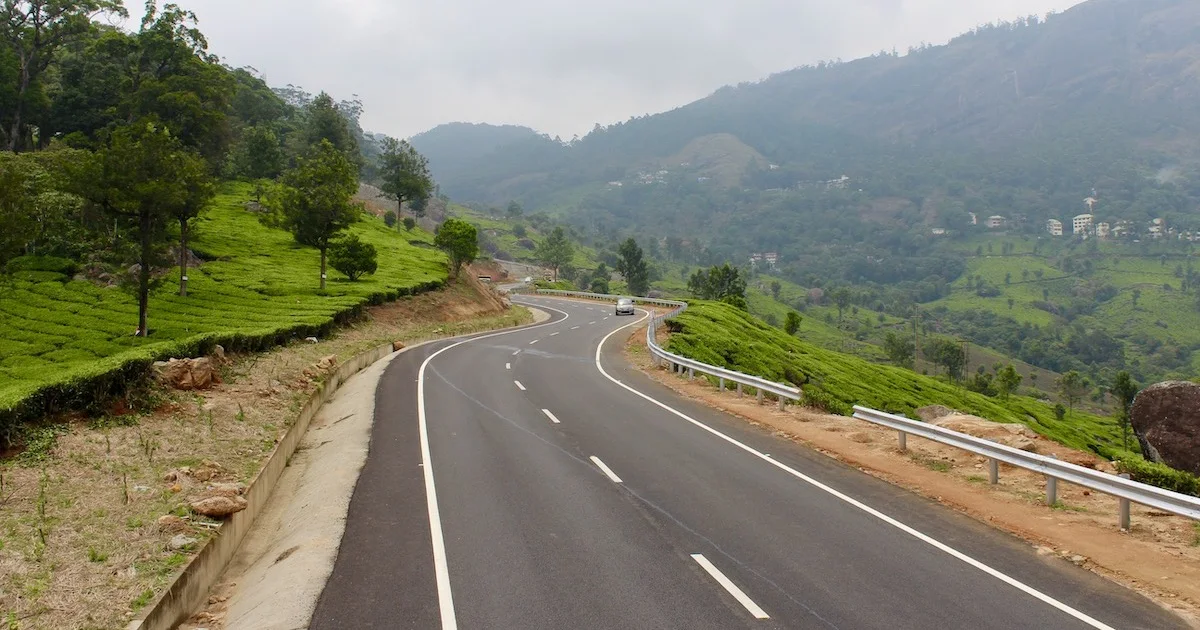
I booked all of my overland transport using 12Go. While Kerala’s public transport system isn’t always prompt, it is fairly extensive.
In Cochin and backwater destinations, ferries are one of the quickest ways to travel between cities, towns or villages. There are also train stations around Kerala’s biggest towns and cities. Bus routes usually cover smaller destinations.
In the mountainous regions, there are less public transport options available, so taxis and auto rickshaws are the go-to way of getting around. Kerala also has Uber, so booking a taxi is very straightforward, and there are daily hire options if you need a driver for the day.
When it comes to longer journeys across Kerala, train travel or bus travel are your main options if you’re on a budget and not travelling as part of a tour group.
You can book trains across Kerala using RailYatri or Paytm too.
Useful apps for Kerala
Apps may not be something that you pack in your physical bag. However, they’re a key part of your preparation for visiting Kerala. They can help you to plan your travel, navigate Kerala, call a taxi, communicate with locals and book accommodation.
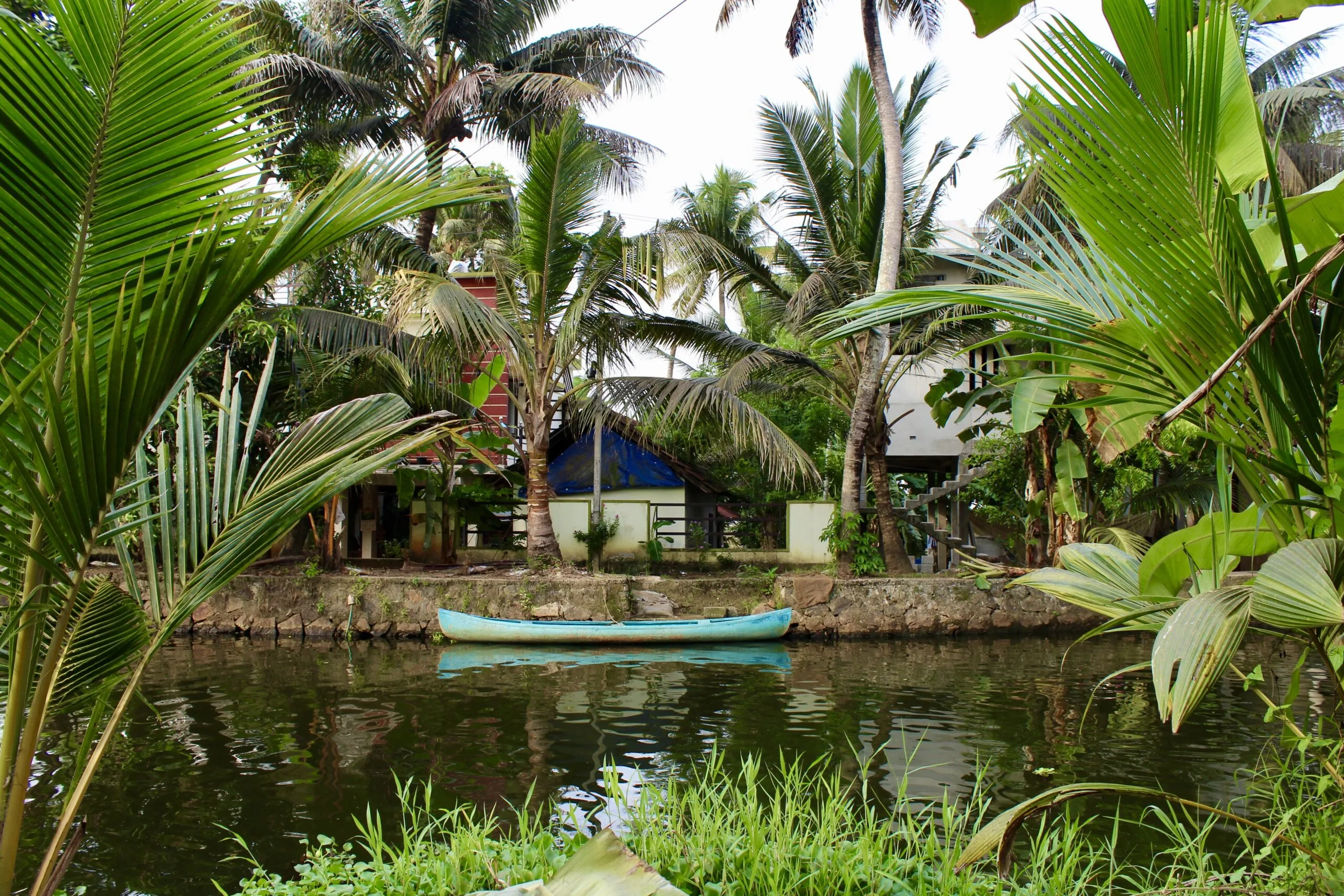
Wifi is readily available in Kerala in hotels, restaurants, and cafes, so you shouldn’t have too much trouble accessing the internet. You can also buy a SIM card in Kerala, which will allow you to connect to 3G or 4G when you’re away from WiFi. A SIM card can be inserted into any unlocked phone.
The easiest place to pick up a SIM card is at Delhi Airport. They sell Airtel SIM cards, which work well in south India. There are also prepaid SIM cards at the Airtel counter at the exit of Cochin airport. They will take your photograph, a copy of your passport and a copy of your visa. Vodafone and Airtel sim cards both work well in Kerala.
- Google Translate: Malayalam is the official language in Kerala, but people in Kerala speak a variety of languages. including Tamil, Tulu, Kannada, Gujarati and English.
- Google Maps or Maps.me: These two apps are some of the best options for navigation. With both apps, you’re able to download offline maps and navigate without the internet.
- Currency Converter Plus: This app has been my go-to for converting currencies since I started travelling eight years ago, and it works offline.
- Uber: Uber is one of the cheapest ways of getting a taxi in Kerala. Their cheapest options are UberGo auto-rickshaw taxis, but there are also compact, budget cars and more luxurious cars with air-conditioning available such as Sedan.
Suggested reading:
- Best food in Kerala district by district
- Munnar itinerary – tea treks, hikes and more.
- Steal my Thekkady itinerary
- Alleppey itinerary – houseboats and backwaters…
FAQ
As India’s southernmost state, Kerala is hot and humid. Cotton clothes are breathable, lightweight, and quick to dry compared to heavier fabrics.
In Alleppey, you should wear lightweight, breathable cotton or linen clothes because of the hot weather. Dress modestly, keeping shoulders covered and dresses or shorts below the knee. You might want to consider wearing dark colours, because you may get splashed by passing boats. If you’re taking part in watersports or visiting the beach, pack swimwear and clothes you don’t mind getting wet.
In the city, dressing modestly is important, as you’re more likely to offend locals or attract stares if you wear short or clingy clothes. Keep knees and shoulders covered whenever possible. The city is hot and humid, and there’s not much relief from the heat, so wear lightweight breathable clothes. If you’re visiting during monsoon seasons, pack lightweight waterproofs.
The weather is slightly cooler in Munnar, as the hill station is 1,532 metres above sea level. However, it’s still important to wear breathable clothing during the summer months. It’s important to cover up in lightweight, breathable clothing in Munnar, especially if you’re engaging in outdoor activities, because there are leeches due to the damp, warm weather. Wearing sturdy footwear with grips is important, because the terrain is more uneven in Munnar.
Located between 700 and 2100 metres above sea level, Wayanad is another cool destination. Many of the tourist destinations in Wayanad are only accessible with a trek, so wearing walking boots is important. Leeches and insect bites are common in Wayanad, so covering exposed skin with light, breathable clothes is very important.

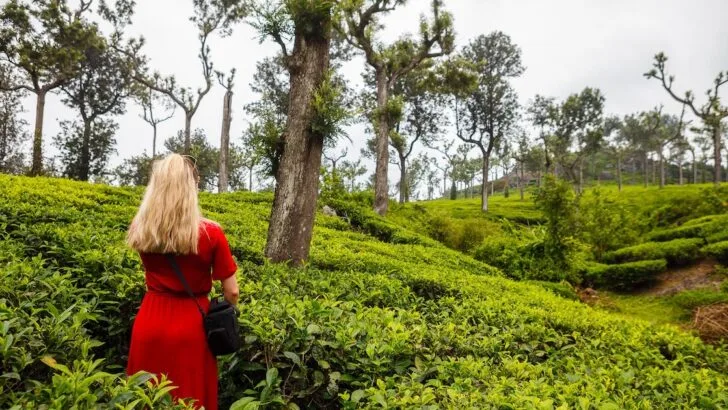
Judith Sowerby
Friday 7th of March 2025
We are going to Kerola Cochin in April What do we need to take to wear and are there shops to buy dresses
Heather
Monday 7th of October 2024
So helpful, thank you We're off there next week......excited
Julia K
Sunday 8th of September 2024
Thank you for your advice - very helpful!
Thursday 4th of April 2024
Hi Katie, Good article, but I would like to point out 2 mistakes - Cochin is not the capital of Kerala, Trivandrum is the state capital. Although Cochin is the most developed city. Another one regarding monsoon - south west monsoon is between June to mid August and then North eastern monsoon from October to November.
Once again thanks a lot for this wonderful article.
Eileen
Saturday 9th of March 2024
Thank you Katie, very helpful. We are going there in January 2025.